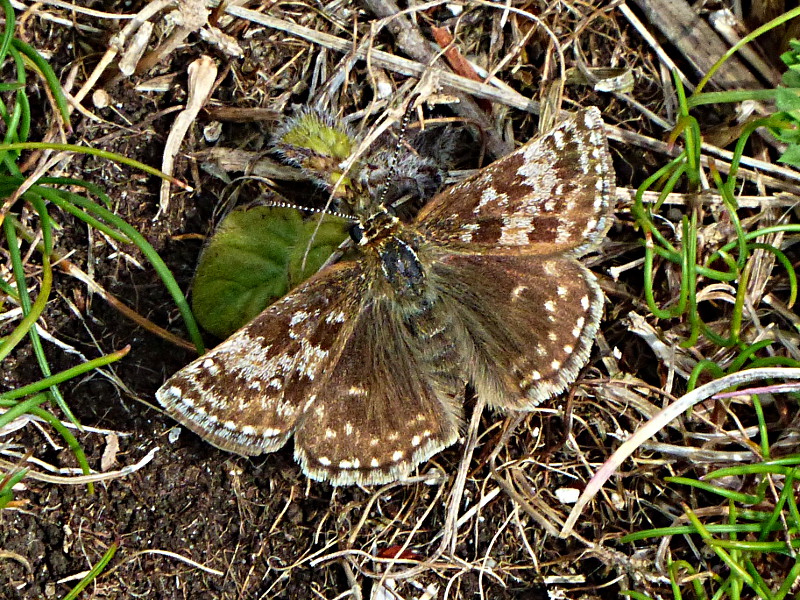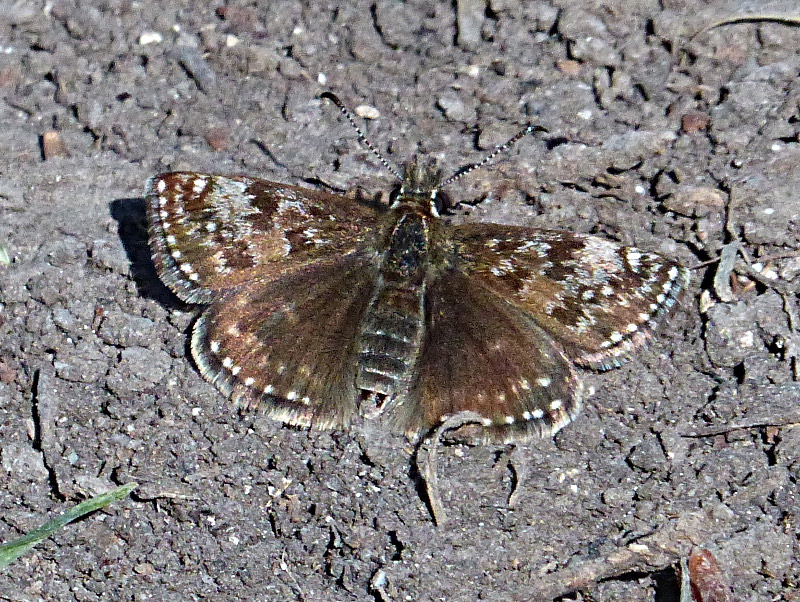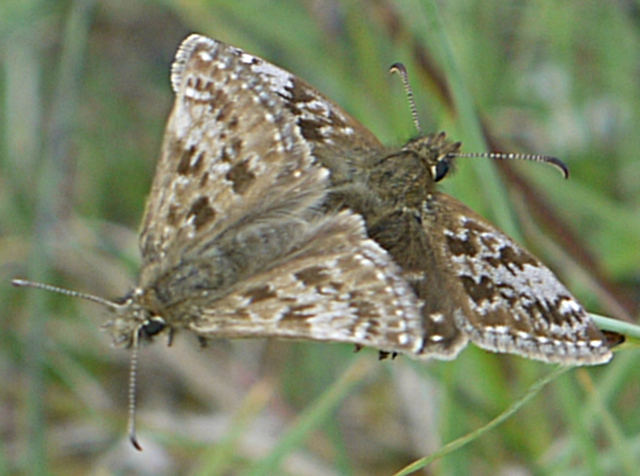Brown Argus
Brown Hairstreak
Chalkhill Blue
Clouded Yellow
Comma
Common Blue
Dark Green Fritillary
Dingy Skipper
Essex Skipper
Gatekeeper
Green Hairstreak
Green-veined White
Grizzled Skipper
Holly Blue
Large Skipper
Large White
Marbled White
Meadow Brown
Orange-tip
Painted Lady
Peacock
Purple Emperor
Purple Hairstreak
Red Admiral
Ringlet
Silver-washed Fritillary
Small Blue
Small Copper
Small Heath
Small Skipper
Small Tortoiseshell
Small White
Speckled Wood
Wall
White Admiral
White-letter Hairstreak
Extinct/rare immigrants
Dingy Skipper
Erynnis tages
General Distribution and Status
This is our most widespread skipper where it can be found throughout Britain, including the north of Scotland, with the strongest colonies in southern England. However, loss of habitat since the last war mostly due to farming improvements has led to many colonies being lost. Since 2005, there has been an upward trend in both range and abundance (Fox et al.). This may be due to increased recording effort rather than an improvement in the butterfly's status. The situation in Hertfordshire and Middlesex mirrors that nationwide. Some good colonies are thriving at Hexton Chalk Pit and Aldbury Nowers although numbers have dropped in the last few years. It was newly found at a brownfield site in central Hertfordshire in 2023 and spotted again in 2024.
| United Kingdom | Herts & Middx | |||
| Distribution | 1976-2019 | -35% | 1980-2015 | -67% |
| Average 10-year trend | -9% | 2006-2015 | +41% | |
| 2024 since 2015-19 | 0% | |||
| Abundance | 1976-2024 | -10% | 1980-2015 | n/a |
| 2015-2024 | -26% | 2006-2015 | +300% | |
| 2023-2024 | -27% | 2024 since 2015-19 | -55% | |
UK Distribution map
UKBMS Species summary
Habitat Requirements
A wide range of habitats suit this butterfly including grassland, railway banks, roadside verges and woodland rides where its main larval foodplant Common Bird's-foot Trefoil Lotus corniculatus grows.
Larval Foodplants
Common Bird's-foot Trefoil L. corniculatus. Greater Bird-s-foot Trefoil L. pedunculatus and Horseshoe Vetch Hippocrepis comosa on the chalk may also sometimes be used (Sawford).
Adult Food Sources
Common Bird's-foot Trefoil L. corniculatus (89), Buttercup Ranunculus sp. (8).
Historical Records
Matthews saw the species at Norton Green Woods (Gibbs) and it is included in Foster's report of 1934. It was found east of Walkern on approach to St. John's Wood in around 1942 and in rough areas in the Walkern area in 1945 by Rev. Greenham (Birdsall). Waterton's 1970-81 report describes it as 'now much scarcer than in Foster's time, possibly due to loss of suitable habitat containing its food-plant bird-s-foot-trefoil'. There is a record of it in Graveley on 3 June 1957 (Sawford). In Sawford's 1984-86 survey, it was seen in the Benington district by Gladwin in each of the 3 years.
Local Distribution and Abundance
Only one record of the species since 1995: at Frogmore Gravel Pit on 28 May 2003 by Jeff Davies who quotes 'plenty of foodplant but long way from nearest colony' (Murray & Wood).

Life History
The butterfly is usually on the wing from the end of April until the middle of June with a peak around the third week of May. Eggs are laid at the base
of the leaves of the foodplant. The larva on emergence forms a tent using several leaflets from within which they feed. When fully grown it creates a
hibernaculum within which it hibernates. In the spring, the larva emerges to form a pupa in the hibernaculum.
More details on the UK Butterflies website
Behaviour/Observation notes
It usually flies close to the ground and is fond of basking on bare patches. However, it needs taller grasses to roost overnight. Due to its inconspicuousness because of its drab colouring the butterfly can easily be missed and therefore probably under-recorded. It can also be confused with the Burnet Companion moth which is similar and flies at around the same time in May and June.
Variations/Aberrations
Rare but unclassified variations include one where the insect's wings are tinged with white.
Find out more on the UK Butterflies website
References

Bison Hill 15 May 2019 (m)

Bison Hill 15 May 2019 (f)

Hexton Chalk Pit 1 Jun 2013



